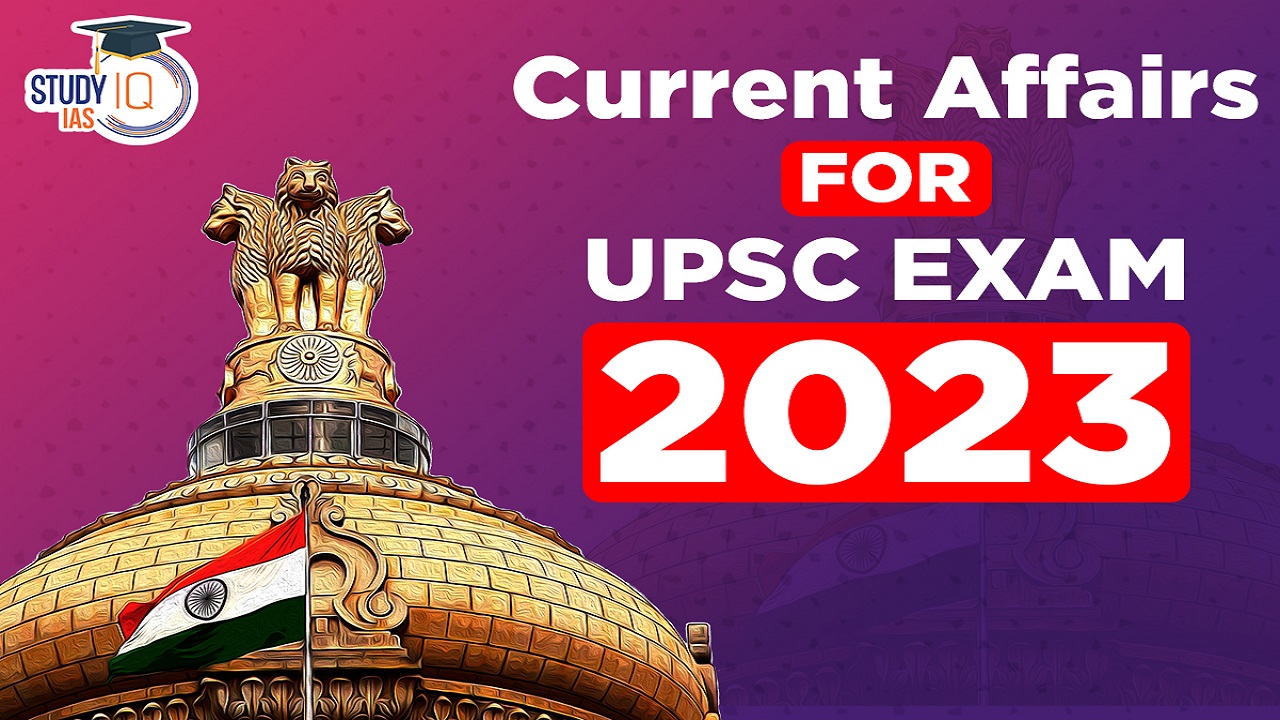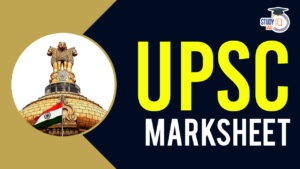Current Affairs 19th August 2023 for UPSC Prelims Exam
Central Water Commission
Context: The Central Water Commission launched an app, called ‘Floodwatch’, which can forecast the chances of floods a day in advance.
More on the News
- The app also provides a seven-day advisory on the chances of floods at various stations in the country where the CWC maintains its measurement gauges.
- The app will also provide State-wise/basin-wide flood forecast up to 24 hours or flood advisory, up to seven days, that can be accessed via selecting specific stations.
- Satellite data analysis, mathematical modelling and real-time monitoring are used to provide the forecast.
About the Central Water Commission (CWC)
- Central Water Commission (CWC) is India’s premier technical organization in water resources.
- It is an attached office of the Ministry of Jal Shakti, Department of Water Resources, River Development and Ganga Rejuvenation.
- It is charged with the responsibility of coordinating with the state governments for control, conservation and utilization of water resources throughout the country, for purpose of Flood Control, Irrigation, Navigation, Drinking Water Supply and Waterpower Development.
- CWC is headed by a Chairman, with the status of Ex-Officio Secretary to the Government of India.
- The work of the Commission is divided among 3 wings namely, Designs and Research (D&R) Wing, River Management (RM) Wing and Water Planning and Projects (WP&P) Wing.
- Altogether there are nineteen organizations located at headquarters in New Delhi and thirteen organizations spread over various locations in India.
Current Affairs 18th August 2023 for UPSC Prelims Exam
Cell Broadcasting Technology
Context: The National Disaster Management Authority (NDMA) has started testing the emergency cell broadcast technology developed by C-DoT that will alert people to natural disasters.
About Cell Broadcasting Technology:
- Cell broadcast technology is a method of sending messages to multiple mobile users in a defined area at the same time.
- It is a type of emergency warning system that enables government agencies and authorised organisations to broadcast critical messages to a large number of people in a specific place, such as during catastrophes or disasters.
- The NDMA has begun testing the technology created by the Centre for Development of Telematics (C-DOT) to deliver alerts straight to mobile phone displays in the event of an emergency. It is currently being tested on Jio and BSNL networks.
- Its goal is to improve public safety and deliver timely warnings during emergencies.
- This method is now in use in developed countries. For example, the United States has an Emergency Alert System (EAS), which allows authorised officials to broadcast emergency alerts and warning messages to the public through cable, satellite, television, AM/FM, and satellite radio.
National Disaster Management Authority (NDMA):
- It is the apex statutory body for disaster management in India.
- The NDMA was formally constituted in 2006, in accordance with the Disaster Management Act, 2005 with Prime Minister as its Chairperson and nine other members, and one such member to be designated as Vice-Chairperson.
- Mandate: Its primary purpose is to coordinate response to natural or man-made disasters and for capacity-building in disaster resiliency and crisis response. It is also the apex body to lay down policies, plans and guidelines for Disaster Management to ensure timely and effective response to disasters.
- Vision: To build a safer and disaster resilient India by a holistic, proactive, technology driven and sustainable development strategy that involves all stakeholders and fosters a culture of prevention, preparedness and mitigation.
Stagflation
Context: According to a study by the RBI, stagflation risk remains low for India with a probability of only 3% with easing of financial conditions.
What is Stagflation?
- Stagflation is an economic phenomenon characterized by a combination of stagnant economic growth, high unemployment, and high inflation rates occurring simultaneously.
- The term Stagflation was coined by Iain Macleod, a Conservative Party MP in the United Kingdom, in November 1965.
- It is considered unusual because inflation and unemployment typically have an inverse relationship in economic theory, known as the Phillips curve.
- Stagflation presents a challenging scenario for policymakers as the usual tools to combat inflation, such as raising interest rates, can worsen unemployment, and measures to reduce unemployment, such as stimulating demand, can exacerbate inflation.

About the Phillips curve
- Phillips curve illustrates the inverse relationship between the rate of unemployment and the rate of inflation in an economy.
- It suggests that when unemployment is low, inflation tends to be high, and vice versa.
- The curve was based on the idea that as labor markets tighten (unemployment decreases), workers gain bargaining power, leading to higher wage demands.
- This, in turn, increases production costs for firms, causing them to raise prices, which contributes to inflation.
- Conversely, when unemployment rises, workers have less bargaining power, leading to lower wage growth.
- As a result, production costs decrease, and firms might reduce prices, contributing to lower inflation.
Other Important Curves in Economics
- Laffer Curve: Depicts the relationship between tax rates and tax revenue, suggesting that increasing tax rates beyond a certain point can lead to diminishing revenue due to reduced economic activity.
- Kuznets Curve: It suggests that as a country’s economy develops, income inequality initially increases during the early stages of industrialization but then decreases as the economy becomes more advanced.
- Gini Coefficient: The Gini coefficient is a numerical measure of income inequality within a population. It ranges between 0 and 1, with 0 representing perfect equality (everyone has the same income) and 1 representing perfect inequality (one person has all the income, while others have none).
- Lorenz Curve: The Lorenz curve is a graphical representation that shows the distribution of income or wealth within a population. It compares the cumulative share of total income or wealth held by different segments of the population.
About the Phillips curve
- Phillips curve illustrates the inverse relationship between the rate of unemployment and the rate of inflation in an economy.
- It suggests that when unemployment is low, inflation tends to be high, and vice versa.
- The curve was based on the idea that as labor markets tighten (unemployment decreases), workers gain bargaining power, leading to higher wage demands.
- This, in turn, increases production costs for firms, causing them to raise prices, which contributes to inflation.
- Conversely, when unemployment rises, workers have less bargaining power, leading to lower wage growth.
- As a result, production costs decrease, and firms might reduce prices, contributing to lower inflation.

Other Important Curves in Economics
- Laffer Curve: Depicts the relationship between tax rates and tax revenue, suggesting that increasing tax rates beyond a certain point can lead to diminishing revenue due to reduced economic activity.
- Kuznets Curve: It suggests that as a country’s economy develops, income inequality initially increases during the early stages of industrialization but then decreases as the economy becomes more advanced.
- Gini Coefficient: The Gini coefficient is a numerical measure of income inequality within a population. It ranges between 0 and 1, with 0 representing perfect equality (everyone has the same income) and 1 representing perfect inequality (one person has all the income, while others have none).
- Lorenz Curve: The Lorenz curve is a graphical representation that shows the distribution of income or wealth within a population. It compares the cumulative share of total income or wealth held by different segments of the population.
Compensatory Afforestation Fund Management and Planning Authority (CAMPA)
Context: The Madras High Court asked the central government to use the funds available with CAMPA to provide compensation to the families relocated from the Mudumalai Tiger Reserve.
About Compensatory Afforestation Fund Management and Planning Authority (CAMPA)
- CAMPA is a statutory organization established to facilitate the utilization of funds accumulated in the Compensatory Afforestation Fund (CAF).
- Compensatory afforestation means that every time forest land is diverted for non-forest purposes such as mining or industry, the user agency pays for planting forests over an equal area of non-forest land, or when such land is not available, twice the area of degraded forest land.
- The Supreme Court of India in 2002 (TN Godhavarman Vs Union of India case) had ordered the creation of CAMPA fund.
- CAMPA was established in 2004 to manage the Compensatory Afforestation Fund (CAF) and it acts as the custodian of the CAMPA fund.
- After the CAG report of 2013 where it was mentioned that CAMPA funds are going unutilized, CAF Act, 2016 came into force on 30th September 2018.
- National Compensatory Afforestation Fund under the Public Account of India and State Compensatory Afforestation Fund under the Public Account of each state was created.
- The State Funds will receive 90% of the payments while the National Fund will receive the remaining 10%.
- All states except Nagaland have set up state CAMPAs following this notification, as of November 2019.
- The funds can be used for the treatment of catchment areas, assisted natural generation, forest management, wildlife protection and management, relocation of villages from protected areas, managing human-wildlife conflicts, training and awareness generation, supply of wood saving devices, and allied activities.
3D Printing
Context: Larsen & Toubro Limited has built India’s first 3D printed post office with technological support from IIT Madras.
About 3D Printing:
What is 3D Printing?
- 3D printing, also known as additive manufacturing, is a process of creating three-dimensional objects by layering materials based on a digital design.
- It is a manufacturing technique that allows the creation of complex shapes and structures with high precision.

How 3D Printing is done?
- The basic principle of 3D printing involves building an object layer by layer.
- It starts with a digital model or a computer-aided design (CAD) file, which is sliced into thin cross-sectional layers.
- The 3D printer then reads these slices and deposits or solidifies material one layer at a time, gradually building up the final object.
Various 3D Printing Technologies
- Fused Deposition Modeling (FDM): This method melts and extrudes thermoplastic filaments through a nozzle, which moves in a controlled manner to deposit the material layer by layer.
- Stereolithography (SLA): SLA printers use a liquid photopolymer resin that is cured by a UV laser or light source. The resin solidifies layer by layer to form the object.
- Selective Laser Sintering (SLS): SLS printers use a powdered material, such as plastic or metal, and a high-power laser to selectively fuse the particles together to create the object.
- Digital Light Processing (DLP): Like SLA, DLP printers use a vat of liquid resin. Instead of a laser, they use a digital light projector to selectively cure the resin layer by layer.
- Binder Jetting: In this method, a liquid binder is selectively deposited onto layers of powder material, binding them together to create the object.
Advantages of 3D Printing
- 3D printing offers several advantages over traditional manufacturing methods.
- It allows to produce highly customized and complex geometries that may be challenging or even impossible to achieve with conventional techniques.
- It also reduces material waste since only the required amount of material is used.
- Furthermore, 3D printing enables rapid prototyping, faster production times, and the ability to manufacture on-demand and in small quantities.
Applications of 3D Printing
- The applications of 3D printing span various industries, including aerospace, automotive, healthcare, architecture, consumer products, and more.
- It is used for prototyping, tooling, customized manufacturing, creating intricate models, and even producing end-use parts and components.


 Daily Quiz 25 April 2025
Daily Quiz 25 April 2025
 Linking Aadhaar with Voter ID Endangers ...
Linking Aadhaar with Voter ID Endangers ...
 UPSC Marks 2025 Out – Download UPSC Ma...
UPSC Marks 2025 Out – Download UPSC Ma...





















